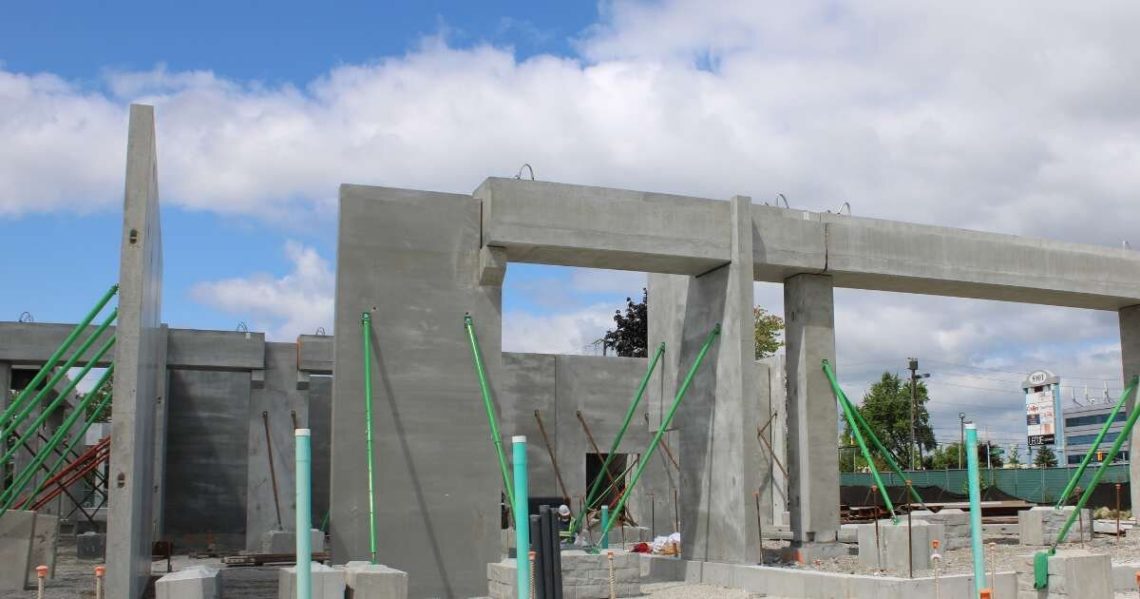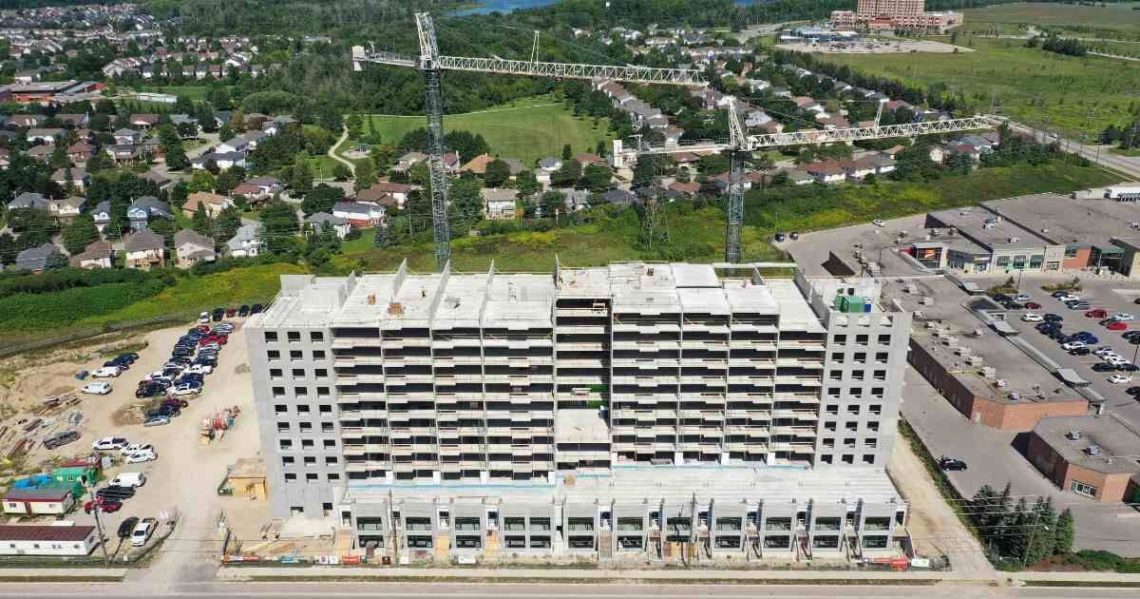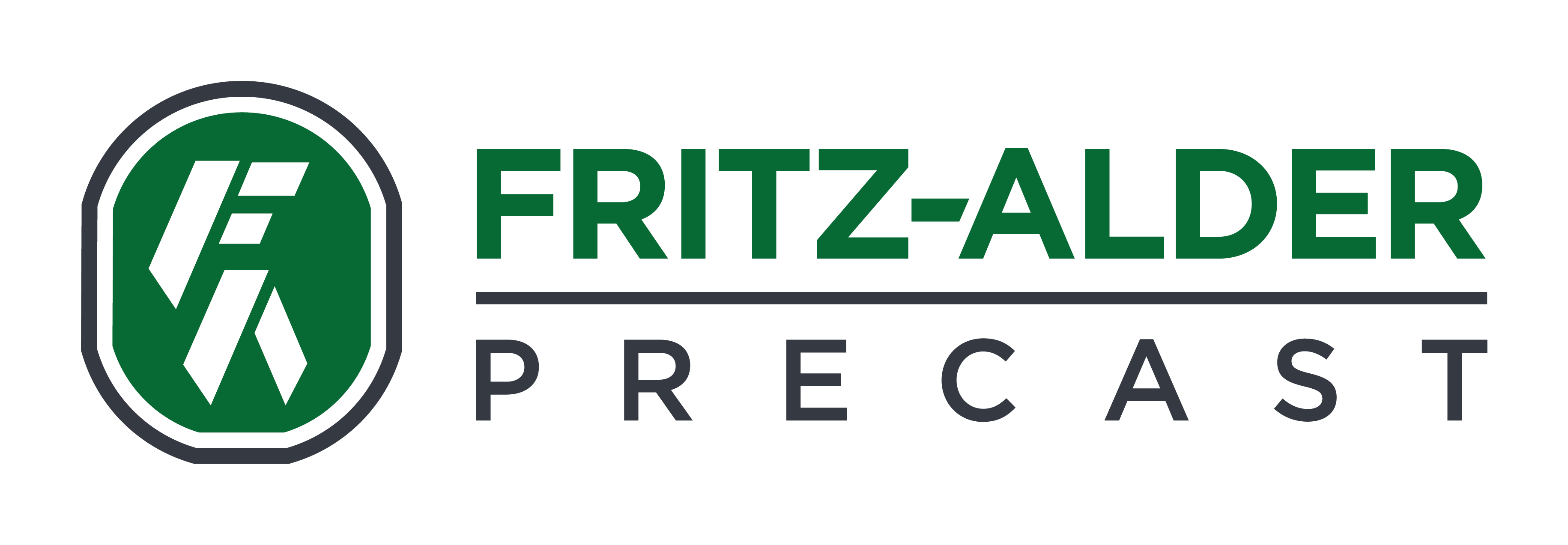When you think of structures that stand the test of time, what comes to mind?
How about the Pantheon in Rome, with its massive concrete dome that has stood tall for nearly two thousand years?
Or the Roman Colosseum, which has withstood centuries of combat and unruly crowds (both ancient and modern)?
Even the ancient Roman aqueducts (at least one of which still carries water today) still exist, in large part, thanks to the awesome longevity of concrete.
Of course, concrete isn’t just a relic of the past. Here at home, iconic structures like the CN Tower – built with a mind-blowing 40,538 cubic meters of concrete – prove that concrete is in it for the long haul.
Concrete is an incredibly versatile building material. While the ancients certainly knew a thing or two about concrete, modern technology allows us to create concrete that is even stronger and more durable.
Fritz-Alder Precast is at the forefront of precast concrete. Get in touch with our team to discuss your project requirements.
Why Concrete Stands the Test of Time
The secret to concrete’s strength and longevity comes down to basic chemistry.
When cement powder and water mix, a chemical reaction called hydration occurs, which transforms the mixture into a rock-like substance. Unlike natural rock, which forms through unpredictable geological processes, concrete is created in a controlled environment. This allows engineers to meticulously select and proportion ingredients like cement, water, and aggregates to achieve specific performance characteristics.
The result is a material that is not only strong and durable but also predictable and consistent in its behaviour.
Plus, concrete’s unique chemical composition (primarily calcium silicate hydrates) gives it exceptional compressive strength and resilience against the elements. Even in damp or salty conditions, it stands strong.
So, while hardened concrete may resemble rock in appearance and strength, it’s actually even better.
And unlike other building materials – wood, steel, and many engineered building products – concrete won’t ever rot, rust, or burn. This natural resistance to all sorts of elements is a big part of why concrete structures can last for generations.
It’s also incredibly versatile. Engineers and builders have a high degree of control over its properties through adjustments to the mix design, such as such as high-strength concrete for skyscrapers, fiber-reinforced concrete for crack resistance, self-consolidating concrete for complex forms, or admixtures that speed or slow curing time.
This flexibility goes even further with reinforcement. Adding steel bars, mesh, or wire tendons creates a super-material that takes the best of both worlds: the strength of concrete under pressure, and the flexibility of steel under tension.
All this to say, concrete isn’t just strong and versatile, it’s inherently durable.
Concrete structures truly do stand the test of time – whether you measure that in years, decades, or centuries.

The Precast Concrete Advantage
As we’ve seen, people have been building incredible structures with concrete for thousands of years. But with all due respect to the Romans, modern technology allows us to take full advantage of concrete’s inherent qualities.
Precast concrete takes all the good things about concrete – the strength, the durability, the versatility – and ramps them up through a controlled manufacturing process.
1. Protection from the Elements
Precast concrete manufacturing occurs in a controlled, indoor environment that helps every batch of concrete cure evenly and predictably, resulting in a stronger and more durable product.
Consistent temperature and humidity create the ideal conditions for hydration (the chemical process we touched on earlier).
Precast products cure in a climate-controlled space where the temperature is just right, reducing the chance of any problems related to fluctuating temperatures or weather conditions.
You can be confident that the final product is not only uniform and attractive but also strong and reliable.
2. Controlled Water-to-Cement Ratio
In the world of concrete, the ratio of water-to-cement (w/c) is a key ingredient in its long-term strength. Too much water and your concrete mix becomes weak and porous, while too little makes it difficult to work with. Some precast concrete products require a higher or lower w/c ratio for specific applications.
Precast concrete production allows for precise control over this ratio to create concrete that’s both strong and easy to use. automated systems to measure out the exact amounts of water and cement needed. This precision, along with the controlled indoor environment, means they can use less water overall.
This might seem like a small detail, but it makes a big difference. Less water leads to a denser concrete mix, which is naturally stronger and better able to handle heavy loads.
3. Rigorous Quality Control
Quality control is the backbone of precast concrete manufacturing. In a precast concrete plant, every step of the process, from the raw materials to the final curing stage, is subject to quality control measures.
- Before any concrete is mixed, the raw materials – cement, aggregates, water, and admixtures – undergo checks for moisture content, gradation, chemical composition, etc.
- The proportions of each ingredient in the concrete mix are carefully calculated the right strength and properties for the job.
- Throughout production, samples of fresh concrete are tested for workability, air content, and other properties.
- Once the concrete has cured, finished precast elements are inspected for imperfections.
- Detailed records are kept of all quality control activities, including test results, material sources, and production parameters. If any problems ever come up, we can quickly trace them back to the source and fix them.
Precast concrete manufacturers invest in specialized teams and advanced technology to achieve the highest level of quality control. These experts understand the science behind concrete, from the ideal mix design to the best curing methods, resulting in a superior and reliable product.
When you choose precast concrete, you can be confident that you’re getting a reliable product that won’t require costly repairs or cause delays in your project schedule. This translates to a more efficient construction process and lower maintenance costs over the lifespan of your building.

Bottom Line: Precast Concrete Delivers
Precast concrete is a triple threat: it’s strong, long-lasting, and saves you money. But that’s not all. It’s also a sustainable choice, as the controlled production process minimizes waste. And since it’s built to last, you won’t need to repair or replace it as often.
Precast concrete offers a range of long-term benefits. Its exceptional durability translates to lower maintenance costs over time.
Precast concrete’s durability stems from meticulous quality control in factory settings, ensuring precise mixtures and curing conditions. Precast components offer enduring strength and reliability in construction due to their ability to resist weathering, seismic activity, and wear over time. By reinforcing structures against corrosion and cracking, they provide exceptional performance.
Plus, the efficiency of precast construction can significantly shorten project timelines, saving you valuable time and money.
In fact, for many projects, precast concrete ends up being a cost-effective option overall.
While you’re probably not looking to build the next Colosseum (although maybe you are – who knows?), at Fritz-Alder Precast, we’re ready to help you build something that will last. Our specialties include hollowcore slabs, perfect for floors and roofs in multi-story buildings, and precast wall panels that combine strength and efficiency.
Ready to see the precast difference firsthand? Contact Fritz-Alder Precast today to discover how precast concrete can transform your next project. With our unwavering dedication to quality, innovation, and sustainability, we’re confident that precast concrete will exceed your expectations and provide enduring value for years to come.
